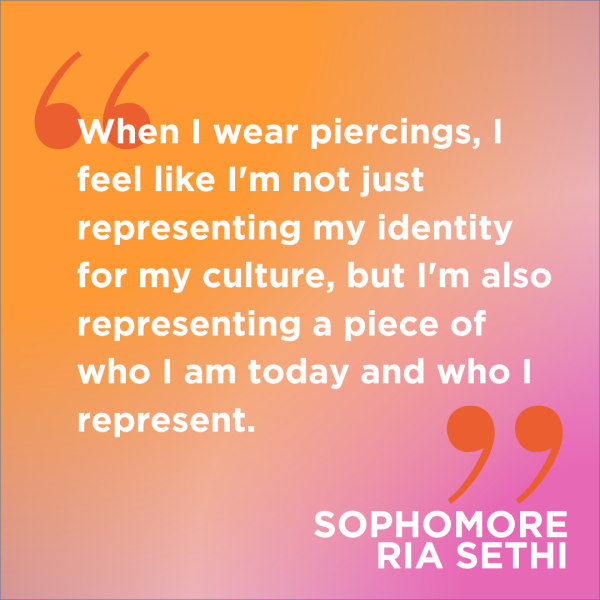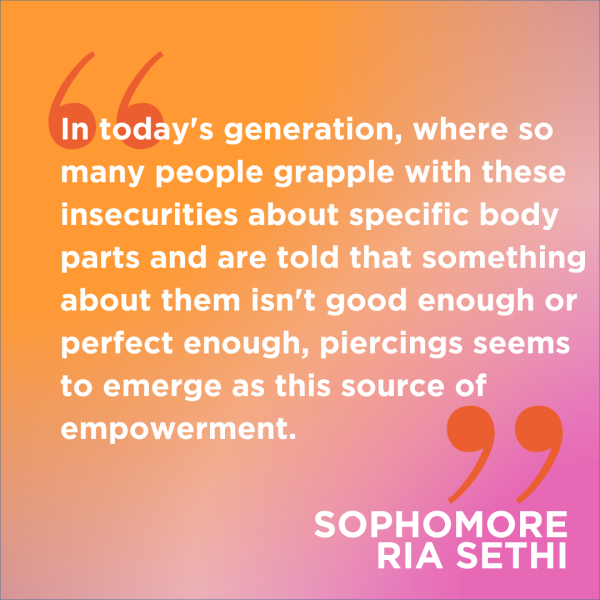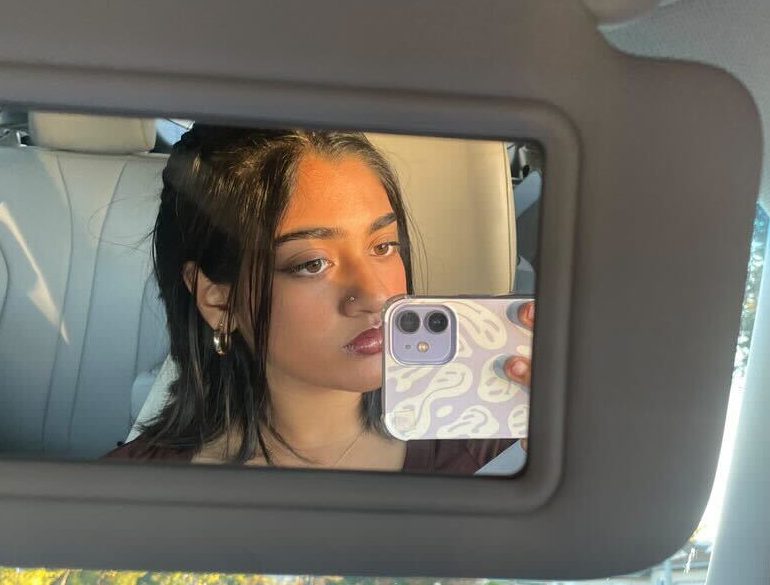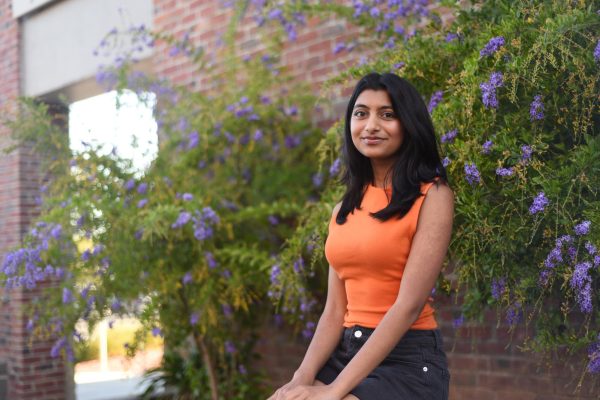Every day when sophomore Ria Sethi wakes up, she looks forward to selecting a pair of earrings to complement her outfit—typically, she’ll pick a dainty pair of thin, gold hoops. Similar to how her parents got their ears pierced at a young age, Sethi had her ears pierced when she was two years old, and she says this practice reflects a part of her Indian heritage. Likewise, junior Prisha Balan got her nose pierced last summer as her grandparents strongly supported her decision to represent their Indian culture. Sethi and Balan agree that their piercings help reinforce their sense of Indian cultural identity and convey the significance of their heritage.
“In India, piercings are often seen as a reflection of identity and social belonging, but at the same time, it’s a cultural and religious tradition,” Sethi said. “With ear and nose piercings, they’ve been a huge part of Indian culture for centuries, which are often associated with these religious and cultural rituals. Many scriptures from my religion mention the importance of wearing those piercings as symbolizing a person’s journey toward spiritual awakening. When I wear piercings, I feel like I’m not just representing my identity for my culture, but I’m also representing a piece of who I am today and who I represent.”

In addition to feeling further aligned with their culture, Sethi and Balan say that having their respective piercings makes them feel more confident and allows them to creatively express their individuality. For example, Balan says she views piercings as a symbol of femininity, and obtaining a nose piercing and her second ear piercings helped her to simultaneously showcase this aspect of herself physically while also enhancing her self-worth.
“I feel like I gained confidence getting a nose piercing especially,” Balan said. “Before getting my piercing, it has been a common comment saying that my nose is well-suited for a nose piercing, so I was like, ‘Okay, maybe if I do get it pierced, it might boost my confidence’ and I do think it does.”
Senior Nithya Appannagaari agrees that her piercings boost her confidence in her self-image. Specifically, she says that her earrings and nose piercing allow her to spotlight one part of her fashion sense.
“For me, my piercings are one of the many facets that I have to express myself,” Appannagaari said. “And specifically within fashion, it provides another outlet for me to add something more to my appearance.”
According to Sethi, her stylistic changes regarding which earrings she wears for her two ear piercings also help her feel more comfortable in her own skin. As a middle schooler, Sethi preferred kitschy earrings—specifically, a pair of gummy bear-shaped earrings—to match her energetic personality. Eventually phasing out to wearing studs, Sethi says she wanted people to take her more seriously in high school and found that wearing hoops helped accentuate her features while allowing her to feel more confident.
“Your self-identity shows why your earrings may change over time because it’s an adaptation to life changes,” Sethi said. “I think changes in your life can influence your choices. For example, someone going through a changing period might go for symbolic earrings to mark their journey. Adaptation reflects this dynamic approach to how they decorate their piercings.”
Similar to Sethi’s experience of following in her parents’ footsteps regarding the process of getting piercings, Appannagaari says that she got a nose piercing to highlight familial traditions as well as to develop her own sense of style, referencing her great-grandmother and aunt who also received piercings. Like Balan, the support Appannagaari received from her family for getting her piercings helped solidify her decision on which type of piercing to get. However, Balan says that while families in her culture are usually receptive to getting piercings, especially nose piercings, it is possible there may be negative connotations with different piercings depending on one’s religion or culture.
“I feel like piercings in general have a negative connotation considering the fact it makes you look rebellious or whatever,” Balan said. “But I feel like in Indian society specifically, having a nose piercing has a very positive connotation associated with it. So I haven’t really gotten bashed for getting my nose pierced by anyone in my community.”
Sethi agrees with the sentiment that familial beliefs play a role in whether or not different types of piercings are accepted by various households, stating that a possible reason for the difference in how younger versus older generations view piercings may be due to the different values each generation has. For example, while Sethi’s father only received ear piercings as a child, she notices the rise in people getting other piercings can be attributed to fashion trends.

“It’s not as looked down upon, but I think across other generations it’s looked down upon because they may hold more conservative views about body modification and my associated piercings with this like nonconformity or rebellion,” Sethi said. “But I also think cultural backgrounds can play a role with some cultures placing a stronger emphasis on conformity to traditional norms.”
Although she admits there may still be some stigma surrounding certain piercings due to conformity to tradition and gender stereotypes, ultimately, Sethi says that besides simply looking aesthetically pleasing, piercings give people something to love and focus on when they view their own bodies.
“In today’s generation, where so many people grapple with these insecurities about specific body parts and are told that something about them isn’t good enough or perfect enough, piercings seem to emerge as this source of empowerment,” Sethi said. “Turning what might be perceived as flaws or insecurities down to these focal points of beauty, and the sparkle and shine of a carefully chosen piece of jewelry not only draws attention but also redefines how well they see and appreciate those parts of their body.”












